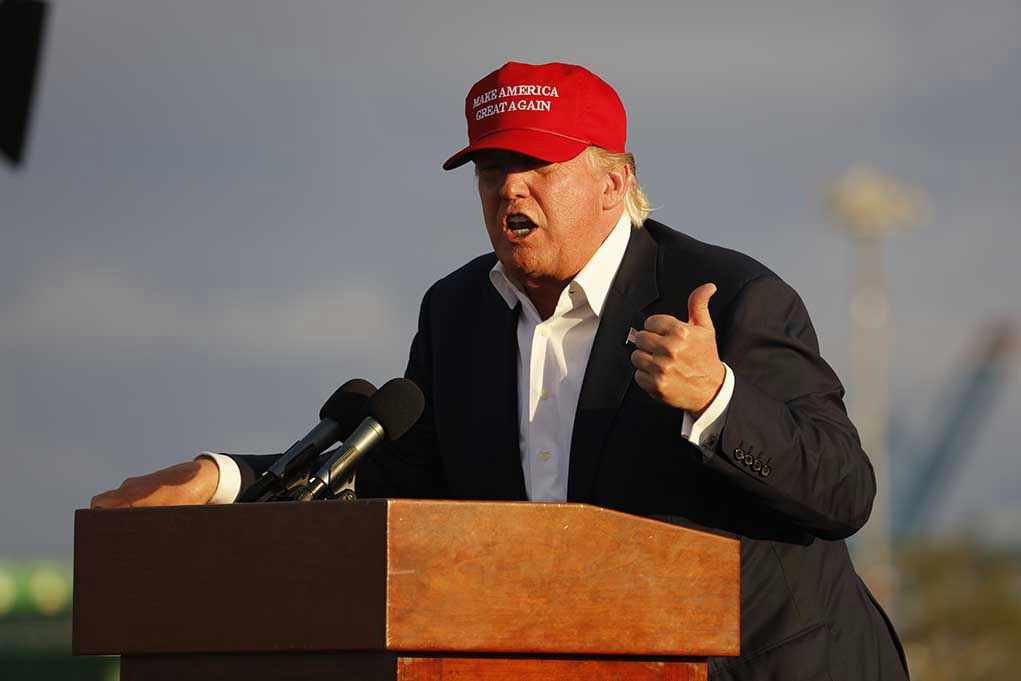
President Trump’s unprecedented use of the government shutdown to permanently defund leftist programs is sending shockwaves through Washington—and could reshape America’s future for decades.
Story Highlights
- Trump is the first president to leverage a shutdown to enact permanent funding cuts, targeting DEI and progressive initiatives.
- Major infrastructure and social programs, especially in liberal strongholds like New York, are halted over DEI contract concerns.
- The administration’s aggressive use of executive authority sidesteps Congress and sets a new precedent in budget standoffs.
- Legal uncertainty surrounds the White House’s power to make lasting changes during a shutdown, raising questions about constitutional checks and balances.
Trump’s Bold Move: Using the Shutdown to Cut Progressive Spending
On October 1, 2025, the federal government shut down after Senate Democrats blocked a House-passed continuing resolution. Unlike past presidents, Donald Trump did not simply pressure Congress for a deal. Instead, his administration immediately began canceling and pausing billions in federal funding—most notably $28 billion in projects, including $18 billion earmarked for major New York City infrastructure—explicitly citing diversity, equity, and inclusion (DEI) contract requirements as a primary reason. This marks the first time in modern history that a president has used a shutdown not just as leverage, but as an opportunity to permanently reshape federal priorities and eliminate progressive programs.
The White House’s approach signals a dramatic shift in executive strategy. While previous shutdowns, such as those during the Obama and Trump presidencies, resulted in temporary disruptions and eventual restoration of funding, Trump’s team is intent on making many of these cuts permanent. The Office of Management and Budget (OMB), led by Russ Vought, is aggressively executing Trump’s directives—halting funds for projects linked to DEI and Biden-era social initiatives, rather than waiting for Congress to resolve the impasse. Congressional Democrats have decried this tactic as an assault on social spending and a violation of established norms, while Republicans praise Trump for fulfilling campaign promises and fighting government waste.
Partisan Deadlock and Constitutional Questions
As the shutdown extends past its second week, the standoff has grown more severe. Negotiations remain stalled, with both parties blaming each other for the crisis. Congressional Democrats, led by Chuck Schumer and Hakeem Jeffries, demand restoration of critical social programs and infrastructure investments. Trump and the GOP, by contrast, insist that the Biden-era growth of federal bureaucracy, DEI mandates, and unchecked spending must end. The administration is also prioritizing military pay and seeking alternative ways to fund essential programs like WIC, further highlighting its willingness to break from precedent.
Legal experts and policy analysts are divided over the White House’s authority to enact such sweeping and permanent changes during a shutdown. Traditionally, only Congress wields the power of the purse, and past presidents have deferred to lawmakers to resolve funding disputes. Trump’s gambit—permanently cutting or redirecting congressionally appropriated funds while the government is shuttered—raises fundamental questions about executive overreach and the future of constitutional checks and balances. This new precedent could alter the balance of power between the executive and legislative branches for years to come.
Impact on Americans and the National Economy
The administration’s actions have had immediate, far-reaching effects. Thousands of federal employees face missed paychecks and growing uncertainty, while key federal agencies, including the CDC and DOT, have undergone layoffs and partial recalls. Programs relied upon by low-income families—such as WIC and rental assistance—are experiencing funding shortfalls, with the Treasury Department using stopgap measures to keep some aid flowing. New York residents are seeing major infrastructure projects halted, as DEI contract requirements become a flashpoint in the broader budget war.
Economists warn that the shutdown is costing the U.S. economy an estimated $15 billion per week in lost GDP, with ripple effects touching nearly every sector. The pain is especially acute for vulnerable populations and states dependent on federal investments. Still, many conservatives see the cuts as necessary to rein in runaway spending and restore fiscal sanity after years of progressive overreach. The administration’s willingness to stand firm—despite media outrage and political protests—has energized Trump supporters who have long called for a break from business as usual in Washington.
Setting a New Precedent—and the Road Ahead
With no resolution in sight, the shutdown’s long-term implications are already coming into focus. By setting a precedent for using executive authority to enact permanent funding changes during a budget crisis, Trump’s approach could embolden future presidents to bypass Congress and pursue ideological goals through unilateral action. The erosion of bipartisan negotiation in favor of direct executive intervention marks a turning point in American governance. While critics warn of lasting institutional damage and potential legal challenges, supporters argue that Trump is finally delivering on promises to cut waste, roll back leftist agendas, and put constitutional principles first.
As political polarization deepens, Americans must grapple with the realities of a new era in federal governance—one where the executive branch may wield more direct power than ever before. Whether this shift will restore accountability and fiscal restraint, or further undermine constitutional checks and balances, remains the central question as the shutdown grinds on and the nation watches what comes next.
Sources:
SRCD U.S. Government Shutdown in 2025
NCSL 2025 Administration Actions
White House Government Shutdown Clock
Eyes on Washington: Shutdown Briefing – Day 14












